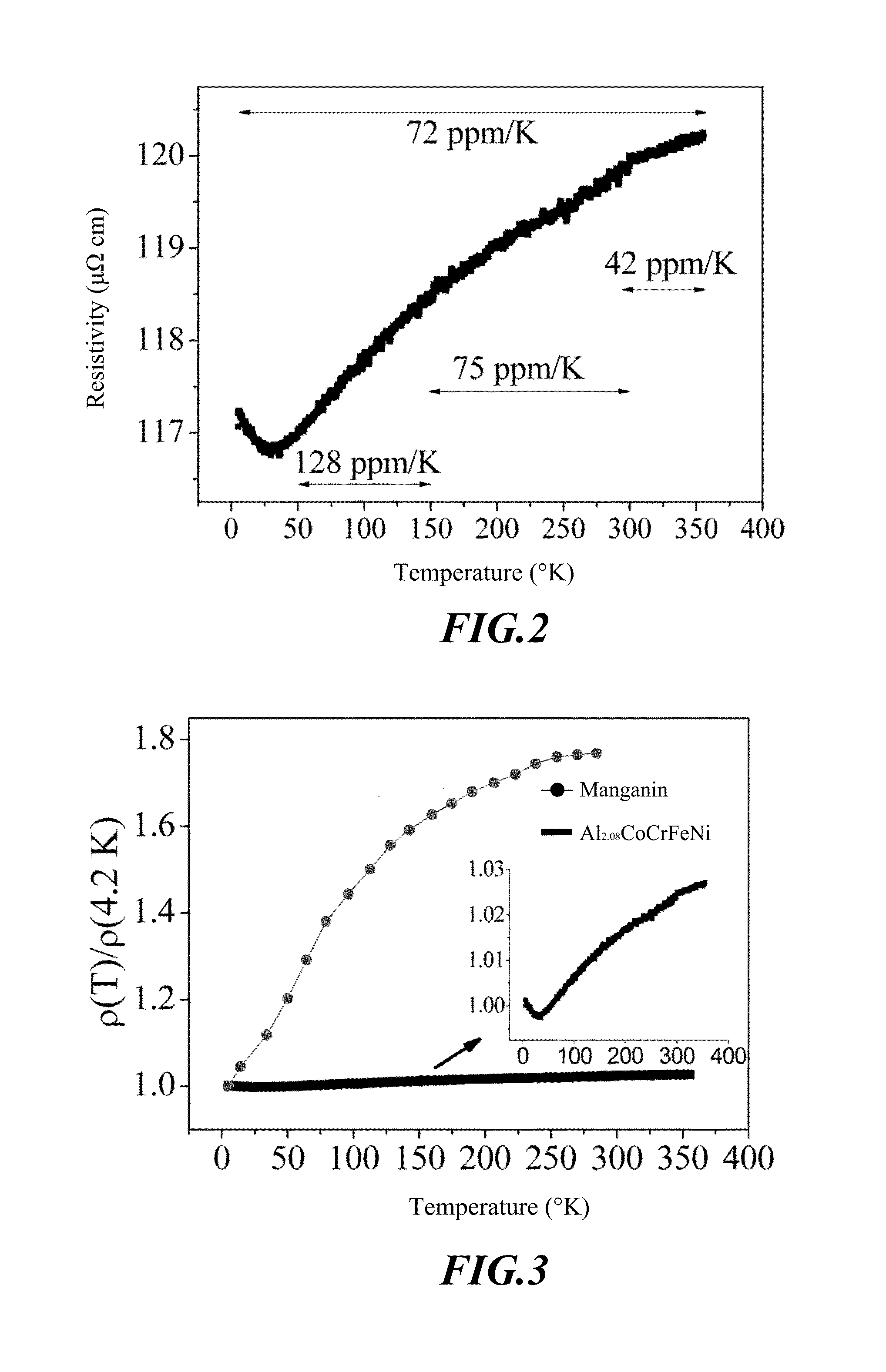Alloy material with constant electrical resistivity, applications and method for producing the same
- Summary
- Abstract
- Description
- Claims
- Application Information
AI Technical Summary
Benefits of technology
Problems solved by technology
Method used
Image
Examples
embodiment 1
The Preparation of Al2.08CoCrFeNi of a Five-Component Alloy Sample
[0020]The preferred embodiment adopts a plurality of raw metal materials that are Al, Co, Cr, Fe, and Ni, each raw metal material is with the purity of 99.9%, and the raw metal materials are mixed with each to other according to the molar ratio of 2.08:1:1:1:1. The embodiment uses a vacuum arc-remelter to smelt such metal materials. That is, the premixed materials about 40 grams are disposed into the vacuum arc-remelter firstly, and the vacuum arc-remelter is pumped to 0.01 bar and then filled with argon to 0.2 bar. The pump and inflation shall be repeated twice, and the procedure of smelting just can be started in order to avoid the alloy from oxidization while in smelting. The electric current of smelting is 420 amperes, and the time is 3 to 5 minutes. One surface of the alloy in the vacuum arc-remelter shall be turned over while each procedure of smelting is finished in order to homogeneously smelt the alloy. After...
embodiment 2
The Preparation of Al2.08CoCrFeNi of a Five-Component Alloy Sample
[0021]By JEOL JSM840 SEM (scanning electron microscope) and X-ray EDS (energy dispersive spectrometer), the analyzed result of the sample is shown in Table 1. The crystal structure of the sample is thus tested via a RIGAKU ME510-FM2 X-ray diffractometer. Continuously cutting the thickness of the sample to 2 mm and grinding the cut sample to be smaller than 500 μm in thickness are to increase the signal strength of resistance in measurement. Thereafter cooperating platinum lines with silver paste is to hold the ground sample. At last, the curve (ρ(T)) of resistance to temperature may be measured by means of EG & G Model 5210 Dual Phase Lock-in Amplifiers and four-terminal interlock circuit loop, and the measuring temperature range is between 4.2 K and 360 K.
TABLE 1X-ray energy dispersive analysis of five-component alloysample Al2.08CoCrFeNi (in at %)PortionAlCoCrFeNidendrite40.8615.4610.7513.1319.79interdendrite30.6513...
PUM
| Property | Measurement | Unit |
|---|---|---|
| Molar ratio | aaaaa | aaaaa |
| Electrical resistivity | aaaaa | aaaaa |
| Temperature coefficient of resistance | aaaaa | aaaaa |
Abstract
Description
Claims
Application Information
 Login to View More
Login to View More - Generate Ideas
- Intellectual Property
- Life Sciences
- Materials
- Tech Scout
- Unparalleled Data Quality
- Higher Quality Content
- 60% Fewer Hallucinations
Browse by: Latest US Patents, China's latest patents, Technical Efficacy Thesaurus, Application Domain, Technology Topic, Popular Technical Reports.
© 2025 PatSnap. All rights reserved.Legal|Privacy policy|Modern Slavery Act Transparency Statement|Sitemap|About US| Contact US: help@patsnap.com


